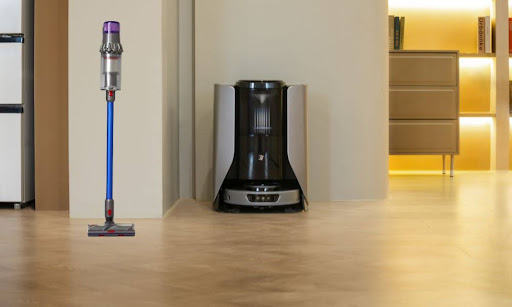As the demand for smart home devices grows, the vacuum robot has evolved into a highly sophisticated machine, offering a seamless cleaning experience. At the heart of this innovation are AI navigation and laser mapping technologies, which are revolutionizing the way robots navigate and clean.
These technologies ensure precise, efficient cleaning, enabling robots to tackle complex home layouts with ease. In this article, we’ll explore how AI navigation and laser mapping work together to optimize cleaning paths and improve environmental perception in robots.
Overview of AI Navigation Technology
AI navigation is a crucial feature in modern robot vacuums, allowing them to clean your home with minimal human intervention. Using intelligent algorithms, AI navigation optimizes cleaning paths by analyzing the layout of the room, identifying obstacles, and determining the most efficient route. This eliminates the need for random cleaning patterns, providing a more thorough and systematic cleaning process.
AI also enables the vacuum robot to adapt to different floor types, furniture arrangements, and unexpected obstacles in real-time. As the robot moves through your home, AI algorithms continuously assess the environment and adjust cleaning strategies to ensure no area is missed. This dynamic, real-time decision-making capability enhances the robot’s efficiency, allowing it to clean effectively even in challenging environments.
Working Principles of LiDAR and Laser Mapping
LiDAR (Light Detection and Ranging) is a technology that uses laser light to scan and map a room, creating a 3D representation of the environment. By emitting rapid pulses of laser light and measuring the time it takes for each pulse to return, LiDAR sensors can build an accurate and detailed map of a space. This mapping allows the robot vacuum for carpet to understand the layout of the room, including walls, furniture, and obstacles.
Laser mapping significantly enhances the robot vacuum’s environmental perception, enabling it to avoid obstacles like furniture and stairs while navigating. The precision of LiDAR technology also allows the vacuum to clean in tight spaces and along edges, ensuring every corner is reached. This is particularly useful for homes with complicated layouts, such as those with multiple rooms or floors.
Advantages of Combining AI Navigation and Laser Mapping
The combination of AI navigation and laser mapping offers a host of advantages for robots, making them more efficient and accurate than ever before.
AI navigation, powered by machine learning, allows the vacuum robot to learn and adapt over time. As it navigates the space, the AI gathers data about the home’s layout and the most efficient cleaning paths. Laser mapping, on the other hand, provides the robot vacuum for carpet with real-time, detailed environmental information, preventing it from bumping into obstacles or missing areas.
Together, these technologies enable the robot to clean in a more structured and intelligent manner. Traditional navigation systems, which rely on random cleaning patterns, can often miss spots or clean areas multiple times. In contrast, AI navigation ensures that the robot vacuum for carpet follows a calculated path, cleaning every inch of the floor without unnecessary repetition.
Applications in Different Environments
AI navigation and laser mapping are particularly effective in homes with multiple floors, tight spaces, or numerous obstacles.
Robots equipped with these technologies can map out multi-story homes and transition between floors with ease, avoiding stairs and ensuring seamless navigation. The robot can also detect obstacles like furniture, toys, or pet beds, navigating around them efficiently without causing damage.
These technologies also allow the robot to adapt its cleaning strategy based on the floor type. Whether it’s hardwood floors, carpet, or tile, the vacuum will adjust its suction power and cleaning pattern accordingly, ensuring optimal cleaning performance on each surface.
By optimizing cleaning patterns for different floor types, AI navigation and laser mapping make the vacuum robot more versatile and effective.
Future Development and Innovation
As AI navigation and laser mapping technologies continue to evolve, we can expect even more advanced capabilities in future robots. In the coming years, these technologies will become even more intelligent, enabling robots to map homes with greater precision and adapt to more complex environments.
AI-driven advancements could lead to even smarter mapping systems, where the robot can recognize specific furniture or areas that require special attention. Improved route optimization algorithms will allow for faster and more thorough cleaning, reducing cleaning time while maintaining a high level of performance.
Additionally, future innovations may allow robots to automatically update their maps as the environment changes, providing real-time updates based on furniture rearrangement or other modifications. This ability to adapt to dynamic environments will make robots even more capable of handling a wide variety of cleaning challenges, making them an essential tool for smart homes in the future.
Conclusion
AI navigation and laser mapping technologies have significantly enhanced the capabilities of robot vacuums, making them more efficient and precise than ever before. These technologies enable the robots to intelligently navigate complex environments, avoid obstacles, and adapt to different floor types.
The combination of AI navigation and laser mapping creates a powerful duo, ensuring thorough and systematic cleaning while preventing missed areas and collisions.
As these technologies continue to advance, robots will become even more intelligent, with improved mapping, adaptive cleaning strategies, and route optimization. The future of cleaning is undeniably smarter, and with the integration of AI and laser mapping, vacuum robots are poised to revolutionize the way we clean our homes.

